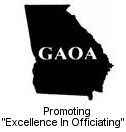IRS Releases New Check Sheet for Audits of Nonprofit Organizations
By Douglas A. Pessefall
The Internal Revenue Service (IRS) recently released a "check sheet" for use by its exempt (or nonprofit) organization auditors to "capture data" about nonprofit organization's governance practices and internal controls as part of a long-term study into the relationship between nonprofit governance and tax compliance. A copy of the check sheet may be viewed at IRS Check Sheet. While the stated goal of the check sheet is to capture data for a study, the check sheet will likely serve as a road map or guide by auditors to probe deeper into an organization's governance and management in an effort to ensure that the organization is organized and operated exclusively for its exempt purpose, that the organization serves a public purpose, that the organization's assets are not inuring or benefiting private interests, and that the organization has not engaged in excess benefit transactions during the period(s) under audit. This article identifies the areas covered by the check sheet and concludes with recommendations to help ensure that your organization receives a passing grade.
The check sheet focuses on six areas:
* Governing Body and Management. The check sheet gathers data about the size and composition of the organization's governing body (usually a board of directors), their duties, qualifications and voting rights; frequency of meetings; and whether the directors and the general public (via a Web site) are provided copies of organization's current articles of incorporation and bylaws.
* Compensation. The check sheet gathers data about whether the compensation arrangements for the organization's directors, officers, trustees and key employees were approved in advance by the board of directors; whether the board relied upon comparability data in setting compensation; and whether the board's approval was contemporaneously documented all touchstones for whether the organization can rely upon the rebuttable presumption of reasonableness to avoid charges of excess benefit transactions.
* Organization Control. The check sheet gathers data about the independence of the organization's board of directors by inquiring as to whether members have family and/or business relationships with other directors, officers, trustees or key employees.
* Conflicts of Interest. The check sheet gathers data about the organization's conflicts of interest policy and whether the policy requires recusals and annual written disclosures of potential conflicts of interest among directors, officers, trustees and key employees.
* Financial Oversight. The check sheet gathers data about whether the organization has in place systems and procedures to ensure that its assets are properly used in a manner that is consistent with its mission; whether the board of directors was provided with periodic written financial reports; whether the organization's Form 990 was reviewed prior to filing by the board and/or a designated committee; whether an independent accountant's report was prepared; and whether the accountant prepared and discussed with the board a management letter and whether the board adopted any of the recommendations made by the accountant.
* Document Retention. Finally, the check sheet gathers data about whether the organization has a written policy governing document retention and destruction to which it adheres, and whether the board of directors contemporaneously documents its meetings.
The development and use of the check sheet is just the latest sign that the IRS intends to continue targeting nonprofit organizations for increased scrutiny. Much has been written, for example, about how the IRS recently redesigned the Form 990 annual information return that many nonprofit organizations file to require greater disclosures of the organization's governance, management and compensation practices and with the goal of increasing transparency and accountability. Moreover, in recent years, the IRS has conducted compliance surveys of hospitals, colleges and universities in an effort to establish baseline practices.
There is no time like the present to ensure that your organization has in place and follows the appropriate policies and procedures in place to withstand scrutiny not only by the IRS, but by donors and the general public who have the right to inspect the Form 990 on which the existence or absence of those policies and procedures are disclosed in response to a series of questions. Specifically, an organization should:
* Ensure that the board of directors is large enough to be representative of the public interest and to include persons with the necessary skills, but small enough to meet regularly and make decisions;
* Develop a board member handbook that includes copies of the organization's current articles of incorporation and bylaws, most recent Form 990, year end financial statement, and policies and procedures;
* Arrange for periodic in service training sessions for directors on issues relating to their fiduciary duties under state corporation law, and their responsibilities to act in furtherance of the organization's stated purpose;
* Require directors, officers and key employees to complete an annual disclosure statement that identifies any potential conflicts of interest with a focus on family and business relationships;
* Form an audit or finance committee that is charged with the duty of reviewing and reporting to the board of directors on the organization's financial activities, selecting and working with an independent accountant, and reviewing the organization's annual Form 990 prior to its filing;
* Adopt formal conflicts of interest, compensation, investment, fundraising, whistleblower and document retention policies, and procedures for the documentation of board actions in minutes; and
* Require board approval in advance of all compensation arrangements with directors, officers, trustees and key employees, which arrangements should be based on comparability data and contemporaneously documented.
By Douglas A. Pessefall
The Internal Revenue Service (IRS) recently released a "check sheet" for use by its exempt (or nonprofit) organization auditors to "capture data" about nonprofit organization's governance practices and internal controls as part of a long-term study into the relationship between nonprofit governance and tax compliance. A copy of the check sheet may be viewed at IRS Check Sheet. While the stated goal of the check sheet is to capture data for a study, the check sheet will likely serve as a road map or guide by auditors to probe deeper into an organization's governance and management in an effort to ensure that the organization is organized and operated exclusively for its exempt purpose, that the organization serves a public purpose, that the organization's assets are not inuring or benefiting private interests, and that the organization has not engaged in excess benefit transactions during the period(s) under audit. This article identifies the areas covered by the check sheet and concludes with recommendations to help ensure that your organization receives a passing grade.
The check sheet focuses on six areas:
* Governing Body and Management. The check sheet gathers data about the size and composition of the organization's governing body (usually a board of directors), their duties, qualifications and voting rights; frequency of meetings; and whether the directors and the general public (via a Web site) are provided copies of organization's current articles of incorporation and bylaws.
* Compensation. The check sheet gathers data about whether the compensation arrangements for the organization's directors, officers, trustees and key employees were approved in advance by the board of directors; whether the board relied upon comparability data in setting compensation; and whether the board's approval was contemporaneously documented all touchstones for whether the organization can rely upon the rebuttable presumption of reasonableness to avoid charges of excess benefit transactions.
* Organization Control. The check sheet gathers data about the independence of the organization's board of directors by inquiring as to whether members have family and/or business relationships with other directors, officers, trustees or key employees.
* Conflicts of Interest. The check sheet gathers data about the organization's conflicts of interest policy and whether the policy requires recusals and annual written disclosures of potential conflicts of interest among directors, officers, trustees and key employees.
* Financial Oversight. The check sheet gathers data about whether the organization has in place systems and procedures to ensure that its assets are properly used in a manner that is consistent with its mission; whether the board of directors was provided with periodic written financial reports; whether the organization's Form 990 was reviewed prior to filing by the board and/or a designated committee; whether an independent accountant's report was prepared; and whether the accountant prepared and discussed with the board a management letter and whether the board adopted any of the recommendations made by the accountant.
* Document Retention. Finally, the check sheet gathers data about whether the organization has a written policy governing document retention and destruction to which it adheres, and whether the board of directors contemporaneously documents its meetings.
The development and use of the check sheet is just the latest sign that the IRS intends to continue targeting nonprofit organizations for increased scrutiny. Much has been written, for example, about how the IRS recently redesigned the Form 990 annual information return that many nonprofit organizations file to require greater disclosures of the organization's governance, management and compensation practices and with the goal of increasing transparency and accountability. Moreover, in recent years, the IRS has conducted compliance surveys of hospitals, colleges and universities in an effort to establish baseline practices.
There is no time like the present to ensure that your organization has in place and follows the appropriate policies and procedures in place to withstand scrutiny not only by the IRS, but by donors and the general public who have the right to inspect the Form 990 on which the existence or absence of those policies and procedures are disclosed in response to a series of questions. Specifically, an organization should:
* Ensure that the board of directors is large enough to be representative of the public interest and to include persons with the necessary skills, but small enough to meet regularly and make decisions;
* Develop a board member handbook that includes copies of the organization's current articles of incorporation and bylaws, most recent Form 990, year end financial statement, and policies and procedures;
* Arrange for periodic in service training sessions for directors on issues relating to their fiduciary duties under state corporation law, and their responsibilities to act in furtherance of the organization's stated purpose;
* Require directors, officers and key employees to complete an annual disclosure statement that identifies any potential conflicts of interest with a focus on family and business relationships;
* Form an audit or finance committee that is charged with the duty of reviewing and reporting to the board of directors on the organization's financial activities, selecting and working with an independent accountant, and reviewing the organization's annual Form 990 prior to its filing;
* Adopt formal conflicts of interest, compensation, investment, fundraising, whistleblower and document retention policies, and procedures for the documentation of board actions in minutes; and
* Require board approval in advance of all compensation arrangements with directors, officers, trustees and key employees, which arrangements should be based on comparability data and contemporaneously documented.



